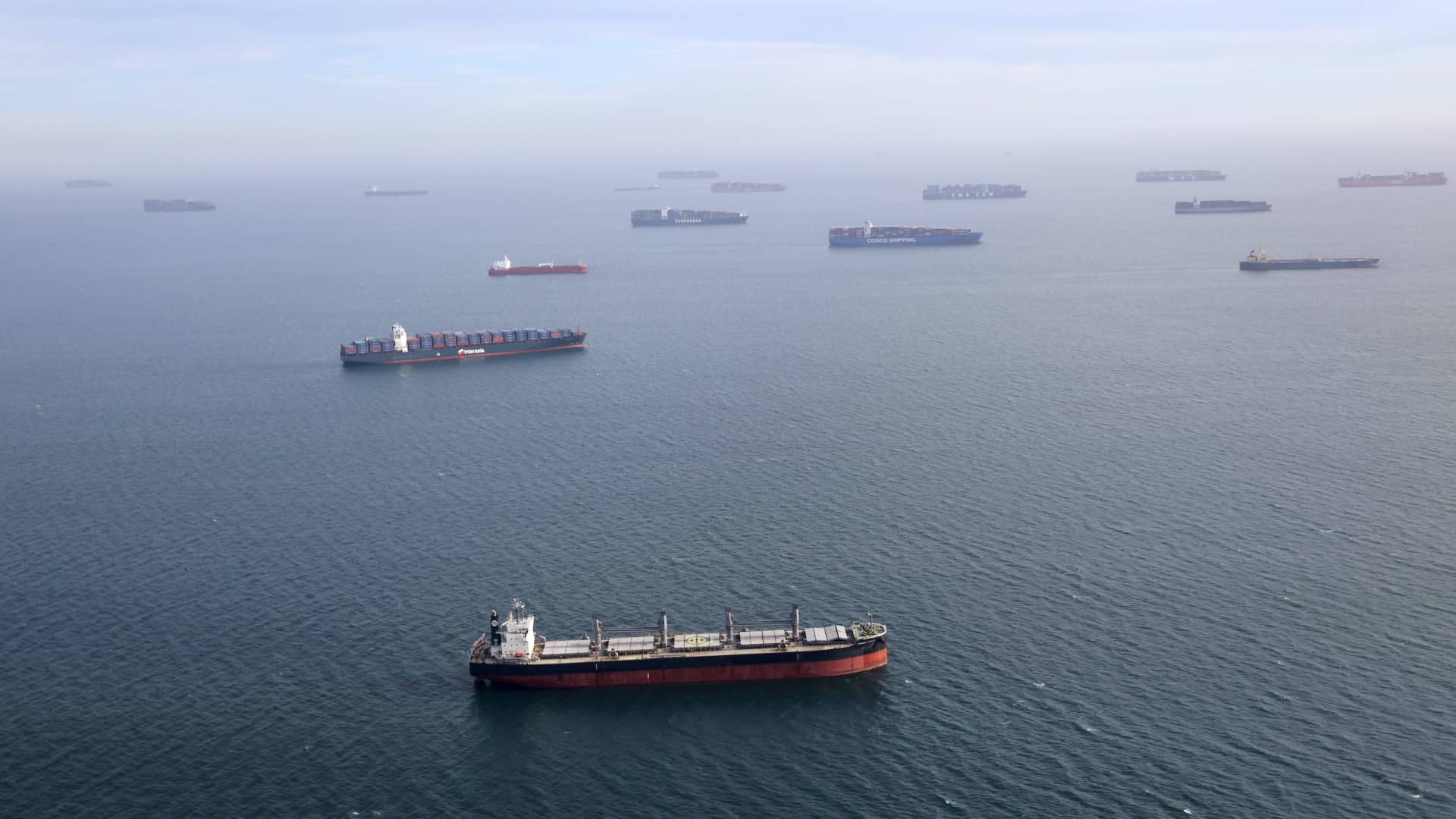
Wall Street’s biggest bank CEOs, from Jamie Dimon at JPMorgan to Brian Moynihan at Bank of America, were talking a recession as the “central case” as part of earnings reports on Friday morning.
It might be a “mild” one, as Moynihan predicts, but from the world of global trade, there are several indicators backing up the bank chiefs’ view of the macroeconomic landscape, flashing warning signals of continued consumer weakness for the first quarter.
The flow of trade is a real-time and forward-looking indicator of consumer spending and the economy because it shows supply, demand, and consumption. Here are four indicators to watch and what they are currently showing.
Indicator No. 1: Warehouse inventory and rates
Warehouse inventory is a good indicator of the health of the consumer because it gauges how much product is sitting in storage. The more product sitting in storage, the more it takes up valuable space and increases the price of storage. According to WarehouseQuote’s Warehouse Pricing Index report for Q1 2023, warehouse rates remain at high levels as a result of warehouse inventories not coming down significantly in November and December.
This is significant because holiday items were brought in early in 2022 to avoid any delays as shippers saw in 2021. Holiday products were shipped from China to the U.S. between March and May of 2022, leading to increased storage in a warehouse, and that resulted in some massive inventory pileups during the summer from the biggest retailers including Walmart and Target. During the holiday season, it took hefty markdowns from retailers to move products. Where products were being moved more successfully was through internet-based sales.
“Based on the inventory, we see more consumers purchased online rather than in-store,” said Jordan Brunk, chief marketing officer of WarehouseQuote. “Across the industry as a whole, this means there is more e-commerce inventory from warehouses than inventory heading to the brick-and-mortar stores.”
Overall, it expects the lack of warehouse capacity, combined with the lack of new square footage coming online due to the rising cost of capital and slower economy, to keep prices elevated even in a weaker consumer environment.
In Maersk‘s TransPacific Report at the end of December, it said weak demand was “expected to continue into 2023 due to a combination of high inventory levels and the likelihood of a global recession that could already be underway.”
Indicator No. 2: Manufacturing orders
The first indicator is manufacturing orders. Orders continue to be down, based on CNBC reporting, with the high inventories and a lack of consumer demand.
“We are still seeing a 40% drop in current manufacturing orders,” said Alan Baer, CEO of OL USA. “The first quarter is going to be challenging.”
The decrease in orders is based on what the factories normally receive from companies.
Indicator No. 3: Ocean freight bookings
As a result of the decrease in factory orders, there is less demand to book freight on a vessel. The SONAR Freightwaves chart below shows the steady decrease in global ocean orders.
The health of the U.S. consumer and the state of inventories for U.S. companies can be tracked by the amount of global product being brought in by ocean carriers. Ninety percent of all U.S. trade is moved on the ocean. The following chart from SONAR FreightWaves shows the diminished volumes on a global basis.
Indicator No. 4: Blank (cancelled) sailings
Blank sailings are a tool used by ocean carriers as a way to artificially constrict available vessel capacity which influences ocean freight rates. As a result of the drop in manufacturing orders and ocean orders, there are too many ships. Because of the lack of demand for the movement of ocean freight, due to the reduced manufacturing orders, ocean rates have precipitously dropped in all trade routes.
According to Xeneta and Sea-Intelligence, ocean carriers canceled more than six times the number of sailings on Asia to the U.S. West Coast trade route ahead of the Chinese New Year than they did during the same time frame in 2019.
“In a normal year, we tend to see very few blanked sailings in the run-up to this major Chinese holiday as shippers stock up on their inventories,” said Peter Sand, chief analyst at Xeneta. “So, this is a worrying development for carriers and, no doubt, a bad omen of what’s to come for the year ahead.”
Canceled sailings on the other leading trade routes also are elevated. The Far East to the U.S. East Coast skyrocketed by 340% over the same time period. Asia to North Europe has had a 715% increase in blanked sailings.
“This really demonstrates the low level of demand gripping the industry,” Sand said.

